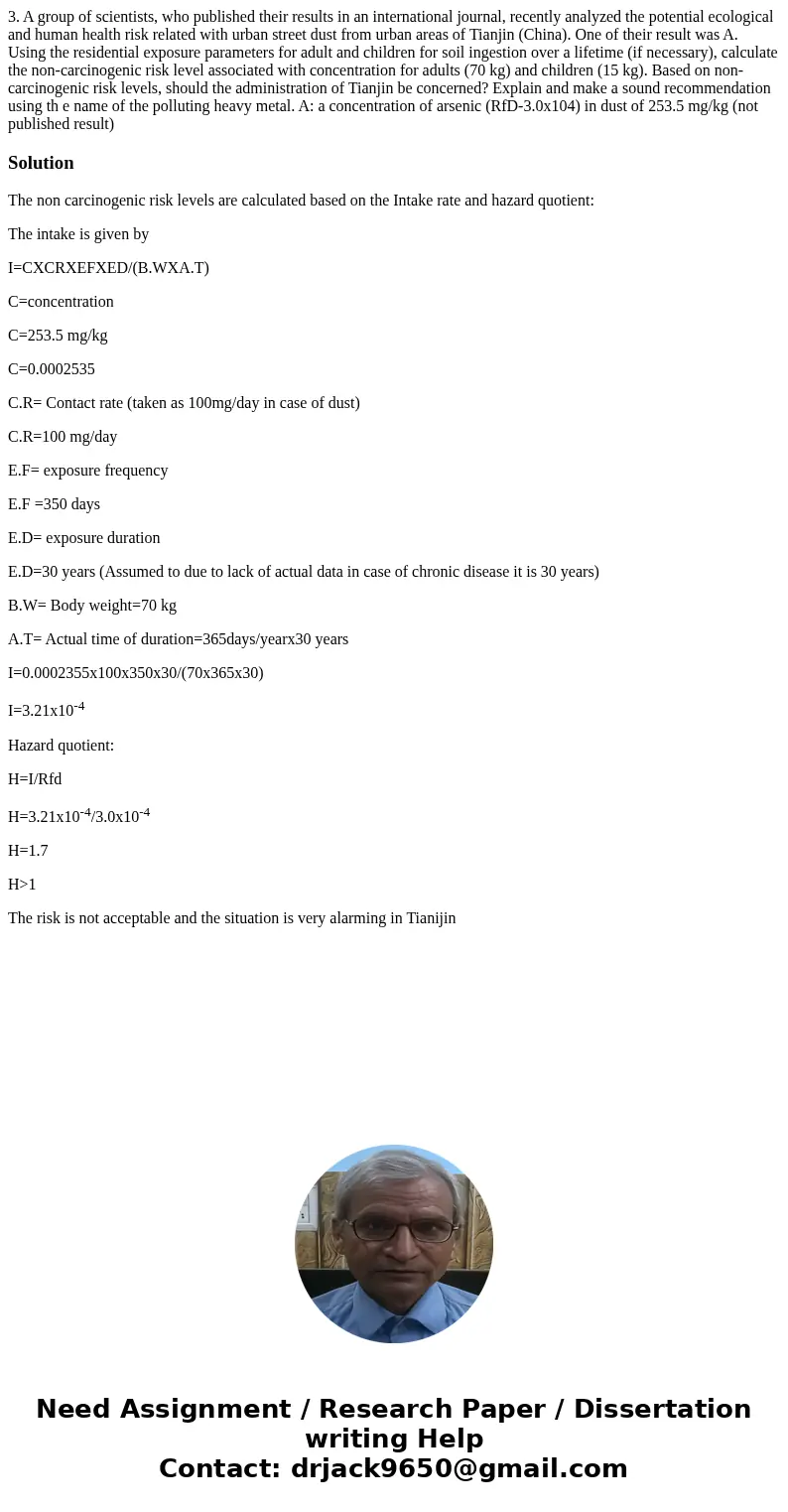3 A group of scientists who published their results in an in
3. A group of scientists, who published their results in an international journal, recently analyzed the potential ecological and human health risk related with urban street dust from urban areas of Tianjin (China). One of their result was A. Using the residential exposure parameters for adult and children for soil ingestion over a lifetime (if necessary), calculate the non-carcinogenic risk level associated with concentration for adults (70 kg) and children (15 kg). Based on non-carcinogenic risk levels, should the administration of Tianjin be concerned? Explain and make a sound recommendation using th e name of the polluting heavy metal. A: a concentration of arsenic (RfD-3.0x104) in dust of 253.5 mg/kg (not published result) 
Solution
The non carcinogenic risk levels are calculated based on the Intake rate and hazard quotient:
The intake is given by
I=CXCRXEFXED/(B.WXA.T)
C=concentration
C=253.5 mg/kg
C=0.0002535
C.R= Contact rate (taken as 100mg/day in case of dust)
C.R=100 mg/day
E.F= exposure frequency
E.F =350 days
E.D= exposure duration
E.D=30 years (Assumed to due to lack of actual data in case of chronic disease it is 30 years)
B.W= Body weight=70 kg
A.T= Actual time of duration=365days/yearx30 years
I=0.0002355x100x350x30/(70x365x30)
I=3.21x10-4
Hazard quotient:
H=I/Rfd
H=3.21x10-4/3.0x10-4
H=1.7
H>1
The risk is not acceptable and the situation is very alarming in Tianijin

 Homework Sourse
Homework Sourse